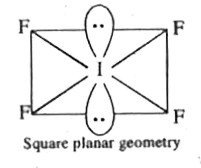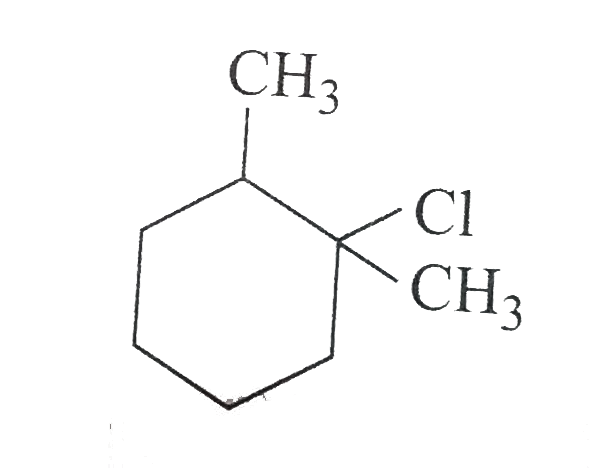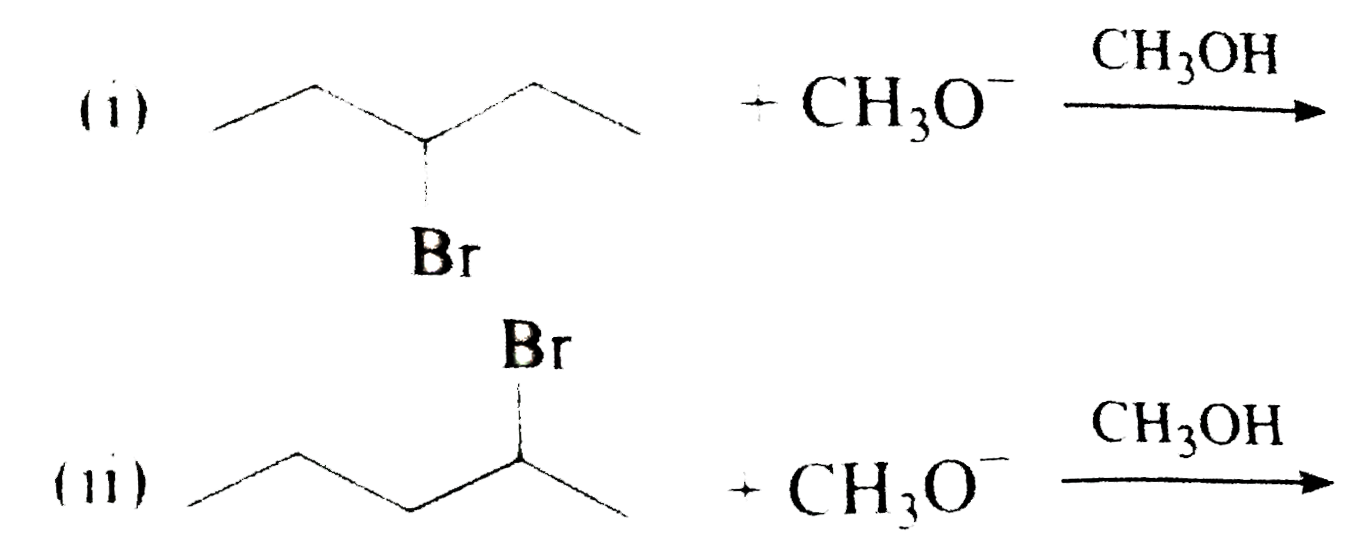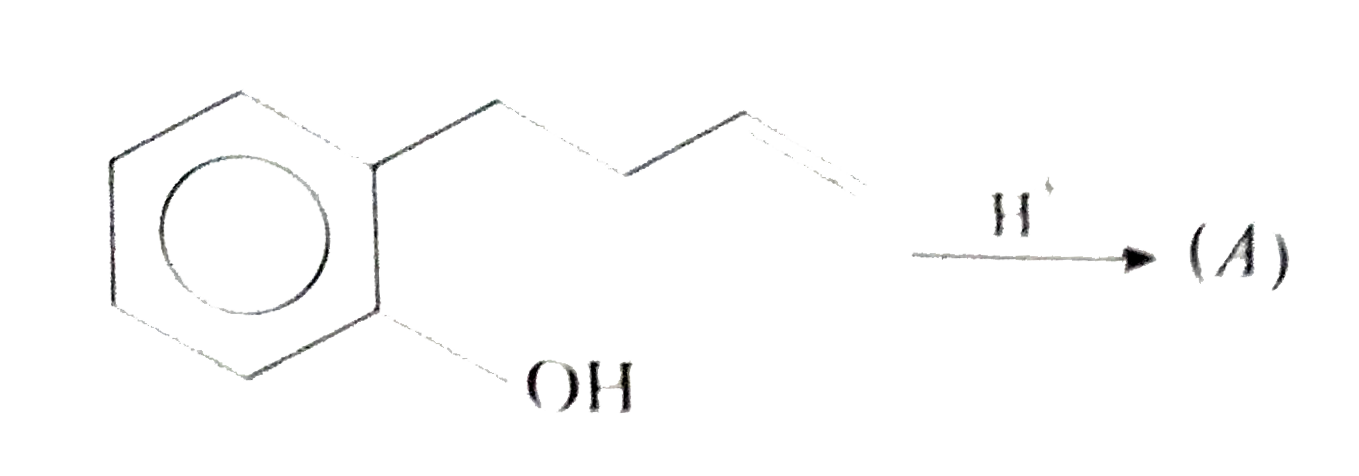Explain the following:
(a) Arrange HCI, HI, HBr, HF in increasing order of acidic strength.
(b) Draw structure ofIF−4
(c) Why are interhalogen compounds more reactive than related elemental halogens ?
(d) Write chemical formula of Laughing gas.
(e) Why molecular nitrogen is not so reactive ?
(a) The increasing order of acidic strength is
HF < HCI < HBr < HI
(b) Structure of IF−4
In IF−4 , Iodine atom is in sp3d2 hybridisation state.

(c) Interhalogen compounds are more reactive than halogens because the bonds are more polar and weaker in interhalogens as compared to in halogens.
(d) N2O
(e) This is because in N ≡ N, the bond length is small and it has high bond energy (945 kJ /mol).
Topper's Solved these Questions
- P BLOCK ELEMENTSBook:MBD -HARYANA BOARDChapter:P BLOCK ELEMENTSExercise:SHORT ANSWER TYPE QUESTIONS
Explore 36 Videos
- ORGANIC COMPOUNDS CONTAINING NITROGENBook:MBD -HARYANA BOARDChapter:ORGANIC COMPOUNDS CONTAINING NITROGENExercise:Long Answer Type Question
Explore 4 Videos
- POLYMERSBook:MBD -HARYANA BOARDChapter:POLYMERSExercise:Long Answer Type Question
Explore 9 Videos
Similar Questions
Explain the following:
(a) Arrange HCI, HI, HBr, HF in increasing order of acidic strength.
(b) Draw structure of IF− .
(c) Why are interhalogen compounds more reactive than related elemental halogens ?
(d) Write chemical formula of laughing gas.
(e) Why molecular nitrogen is not so reactive ?
View SolutionExplain why:
Interhalogen compounds are more reactive than the related elemental halogens.
View Solution
Knowledge Check
Electrochemical series is series of elements arranged in increasing order of their reduction potential. EH+∣H2=0. The metals abvoe H2 have reductioni potential, they are more reactive than hydrogen whereas metals below hydrogen are less reactive than H2. Reduction potentials of metal depends upon (i) sublimation energy (ii) ionization energy and hydration energy of ions.
Which of the following metal can be extracted by chemical reduction?AAlBMgCNaDFe
Account for the following :
a) Moist SO2 decolourises KMnO4 solution.
b) In general interhalogen compounds are more reactive than halogens (except fluorine).
c) Ozone acts as a powerful oxidizing agent
View SolutionAccount for the following :
a) Moist SO2 decolourises KMnO4 solution.
b) In general interhalogen compounds are more reactive than halogens (except fluorine).
c) Ozone acts as a powerful oxidizing agent
View Solution(i) HF is liquid while HCl is gas, why?
(ii) Give the increasing order of acidic strength and reducing character of HF, HCI, HBr, and HI. Give reasons.
View Solution(A) Explain why-
(i) Though nitrogen exhibit +5 oxidation state, it does not form pentahalides.
(ii) Interhalogen compounds are more reactive than their constituent elements.
(iii) The boiling of HF is very high ?
(B) Draw the structure of the molecule and state its geometry.
View Solution(a) (i) Why PCl5 gives fumes in moisture ?
(ii) Why Interhalogens are more reactive than pure halogens ?
(b) Draw the structures of the following :
(i)PCl5(ii)H2S2O8(iii)XeF4
View Solution(a) (i) Why PCl5 gives fumes in moisture ?
(ii) Why Interhalogens are more reactive than pure halogens ?
(b) Draw the structures of the following :
(i)PCl5(ii)H2S2O8(iii)XeF4
View SolutionExplain the following:
a) Why alkenes are more reactive than alkanes?
b) Acetylene reacts with ammoniacal silver nitrate solution or ammoniacal cuprous chlroide solution or sodamide to form an acetylide while ethylene does not.
c) But-2-ene shows geometrical isomerism but but-1-ene does not show.
d) Why has but-1-yne a larger dipole moment (0.80 D) than but-1-ene (0.40D) ?
e) Wjhuy alkylnes are slightly more soluble in water than alkenes and alkanes?
f) Cyclopropane is more reactive than cyclobutane.
g) Cyclopentane is more reactive than cyclobutane.
h) Which isomer of C4H)(9)Br yeilds only a single alkene on dehydrobromination?
i) Write the products of dehydrochlorination of the following:
(j) Which of the following reactions would provide a better synthesis of 2-pentene?
k) Write the major products of dehydration of
l) Comparison of heat of hydrogenation for the following alkenes:

m) Write the intermolecular step and give the product of the following reactioni:

n) Give the structures of an optically active alkene (A) having the lowest molecular mass, which on catalyst hydrogenation gives an optically inactive compound (B).


View Solution
